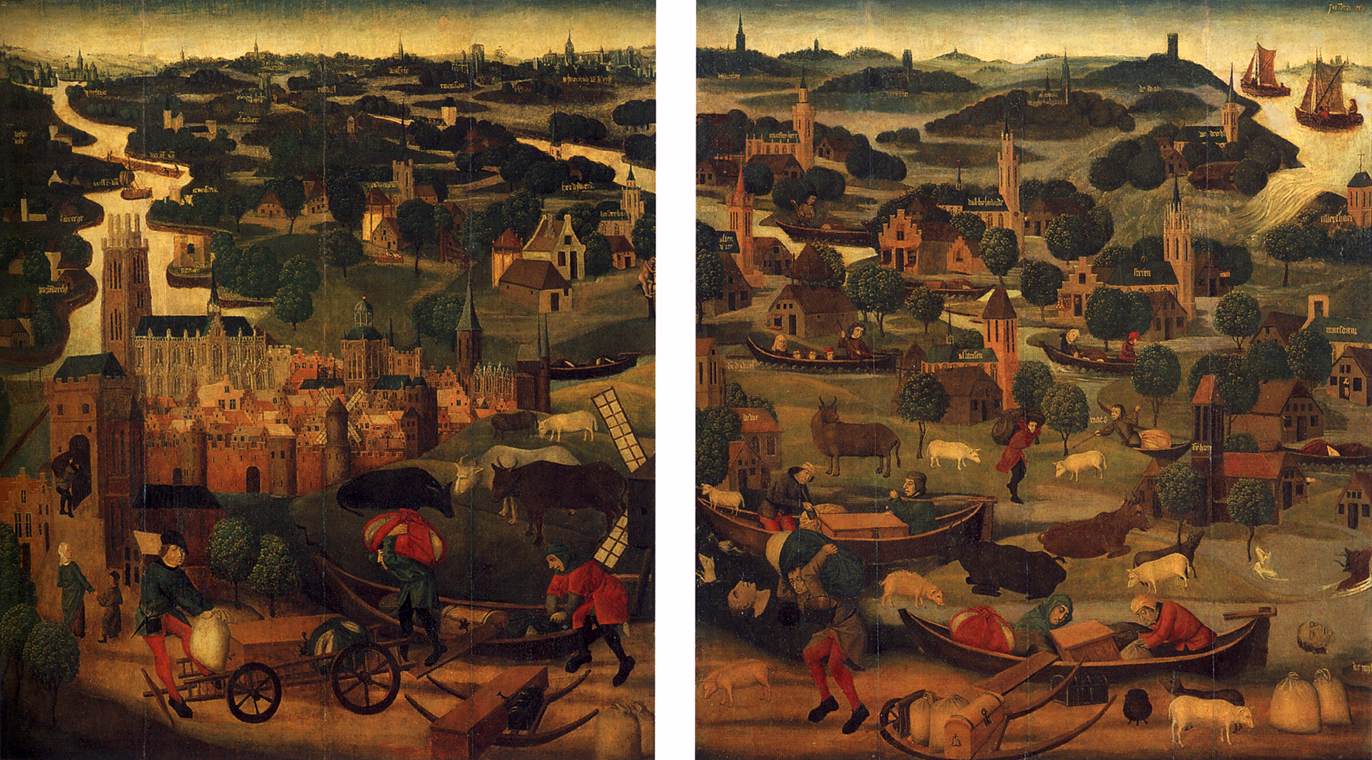I had been looking forward to 'Sussex Landscape: Chalk, Wood and Water' at Pallant House but was sadly too ill to go down and see it. The catalogue is interesting though, with an overview of the exhibition and essays on photography, engraving, chalk and flint. Some of the artists I discuss in Frozen Air were included - Frank Newbould, Eric Ravilious, John Piper, Bill Brandt and Jem Southem. Other famous artists associated with places in Sussex featured - William Blake (Felpham), John Constable (Brighton), Vanessa Bell (Charleston), Lee Miller (Farleys) - along with art by people I have discussed on this blog before - Roger Fenton, Paul Nash, Graham Sutherland, Andy Goldsworthy. I imagine the exhibition's centrepiece would have been Turner's stunning Chichester Canal (c. 1828) which includes the hazy silhouette of the cathedral, located just a street away from Pallant House.
I'll mention here a few less well known works from the catalogue:
- A View of East Dean and Mr. Dipperay's House from the Hills on the East Side of the Village, 1785 by Samuel Hieronymous Grimm. One of the views commissioned for a planned history of Sussex, this is closer to documentation than art but is fascinating now as a record of what could be seen from a specific spot at the end of the eighteenth century. The British Library has 866 of these topographical watercolours.
- View of the Sussex Weald. c. 1927 by C.R.W. Nevinson. If I'm ever in Reading I'll have to visit their museum to see this delightful view through a window, strikingly different to the 'angular views of the war-scarred Western Front' we associate with Nevinson. 'A flourishing genre of images of the Sussex landscape framed by the domestic window is testament to the many artists who made the area their home for short or long periods during the inter-war years.'
- The Wave, 1966 by Gluck. This one is in a private collection and the catalogue's reproduction is a bit small and dark so it's hard to tell what it is really like. A small cropped view in an unusual frame: the whitewater and face of a breaker emerging from a turquoise-grey sea. It was painted when Gluck was living at Chantry House in Steyning with Edith Shackleton Heald.
- Track with Sheep (Near Lewes) c. 1983-87 by John Holloway. 'Holloway began photographing the landscape in 1978, and over the next twenty-five years would provide a unique view of the land by taking photographs at a height of 1,500 feet from a small aeroplane. He would work at two specific times of the year - either side of the spring and autumn equinox - when the angle of the sun reveals the textures of the Downs.' You can see examples of his work in The Guardian's obituary.
- Solar, Seven Sisters, 2019 by Jeremy Gardiner. This combines a familiar (to me) view of the cliffs and buildings at Cuckmere Haven with abstract planes reminiscent of St Ives painters or Richard Diebenkorn. The relief surfaces 'represent both pictorially and conceptually the geological strata of the coastline.'
Before concluding I will just mention one of the book's essays as it's by an artist I'm surprised I haven't mentioned here before, Tania Kovats. I remember going to see her Darwin-inspired artwork TREE at the Natural History Museum back in 2011 (see photo below!) For Sussex Waters in this exhibition she installed bottles of water taken from the county's rivers. The idea of collecting and exhibiting water samples isn't new - Roni Horn's Library of Water in Iceland is more dramatic and directly addresses climate change in preserving glacial meltwater. But if you come from Sussex, the list of rivers Kovats visited is evocative in itself. They have some beautiful, resonant names - Cuckmere of course, and Cowfold, Woodsmill, Adur, Arun, Rother, Uck, Ouse. Glynde evokes an image of well-healed highbrow culture, Gatwick Stream a remnant of a landscape built over for a 'London' airport. There are quite a few I've never heard of but would like to visit. As she says, 'even naming rivers opens us up to connection.'






